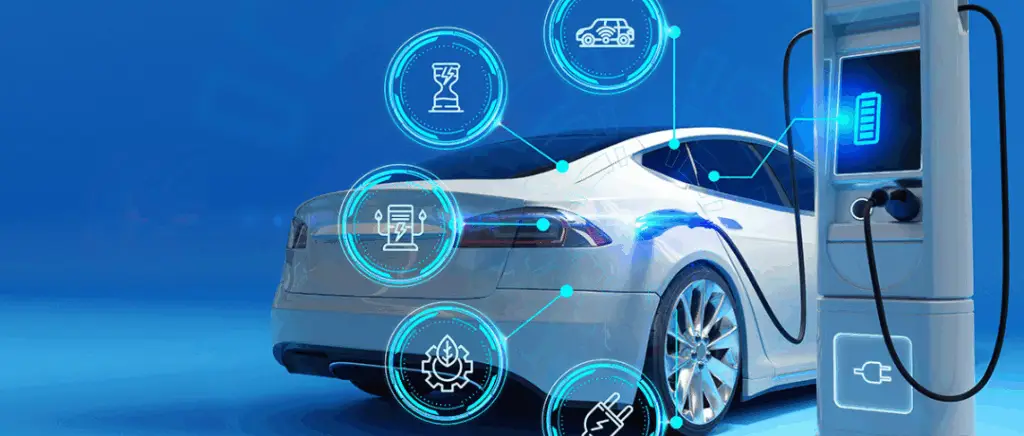Company charging points and current legislation
Since the entry into force of the Loi d'Orientation des Mobilités (LOM) in 2019companies are required to meet specific obligations for the installation of charging points for electric vehicles.
La Climate and Resilience Act from 2021 has strengthened these requirements, stipulating that companies with car parks with more than 20 spaces must provide recharging facilities.. But that's not all: the European Directive on Infrastructure for Alternative Fuels (AFID) imposes strict standards on the power and accessibility of charging points.
To encourage this transition, the government is proposing grants via the Coming soonwhich has extended its eligibility criteria to 2024 for include more SMEs and VSEs.
As a result companies must also comply with pre-equipment requirementsThe new regulations, which have been in force since 2017, are designed to anticipate the future installation of charging points.
For employers, ensuring that terminals are accessible to the public outside working hours is also encouraged by legislation. Finally, tax measures concerningbenefit in kind on the cost of recharging electric vehicles in the workplace have been adapted to encourage this transition, with a allowance of 50 % applicable until the end of 2024.
However, from 1ᵉʳ January 2025the free recharging for employees in the workplace will no longer be available.
Read our article about :
To go into more detail on the above points, the obligation to install recharging points in businesses varies according to the age of the building and the size of the car park. There are 2 possible scenarios:
- For old buildings constructed before 2025 Bollards: car parks with more than 20 spaces must have one bollard, with one additional bollard for every 20 spaces. Car parks with more than 200 spaces must include at least two bollards for people with reduced mobility (PRM).
- For new buildings for which planning permission is granted after March 2021 20% of parking spaces must be pre-equipped, with at least one space for PRMs.
On the other side, the pre-equipmentwhich aims to anticipate the future installation of kiosksIt reduces costs and demonstrates a commitment to sustainability. As a result, the LOM law imposes these requirements on all new buildings and those undergoing major renovation. The obligations apply :
- residential buildings,
- non-residential buildings,
- and mixed-use buildings.
The buildings in question will be subject to specific pre-equipment rates.
Worth noting: The terminals must be installed by a qualified electrician. IRVE qualified electrician to guarantee safety and compliance with standards. This process is mandatory for terminals with a power rating of more than 3.7 kWto ensure safe and efficient installation.
Read our article about :
Why install recharging points at your company?
Adopting recharging stations in your company has a number of advantages many advantagesfrom regulatory compliance tooptimising your brand imagewhile taking care of the your employees' well-being.
At first glance, many electric vehicle owners don't have a charging point at home. Workplace charging points can make up for this shortcoming, reducing stress and interruptions linked to the search for recharging stations.
What's more, install recharging points in your car park:
- improves the welcome for your customers and staff,
- and makes you visible on applications of reference recharging points.
La rental of recharging points for professionals is a interesting alternativeThis means that new equipment can be used without major initial investment, with long-term contracts offering additional services.
Finally, installing terminals in your employees' homes can be a very effective way of improving the quality of life of your employees. practical solutionespecially for those who travel a lot. In addition, the reload card gives your employees access to a vast network of public charging points, facilitating the reimbursement of top-up costs.
Read our article about :
As you would expect, a recharging point is an essential part of a system. essential device for recharging electric and hybrid vehicles. Sound cost varies according to the number of charge points and the structure of the car park.
On average, installing 2 charge points in an unprepared car park costs around 10 000 €including :
- civil engineering,
- installation,
- and maintenance contractsIn particular, to benefit from Advenir aid.
The installation of recharging stations encourages employee energy transition and improves employee loyaltywhile meeting the growing expectations of electric vehicle drivers. Beev offers supervision and maintenance solutions to ensure terminal performance and user satisfaction.
But that's not all: by installing charging points, companies can also improve their CSR policy.
The data collected by the terminals (CO2 savings, usage in kWh) can be used for corporate social responsibility reports, in accordance with the PACTE Actreinforcing the reputation and thethe company's environmental commitment.
In fact, charging stations can generate additional incomeparticularly for ERP (establishments open to the public), by monetising recharging for the public or customers.
What's more, the terminal supervisionwith card payment and management systems via 3G, means that these infrastructures can be integrated into platforms such as ChargeMap, attracting more customers.
Read our article about :
Installation of a company charging point and charging costs at the employee's home: everything you need to know
In addition to the fact that it is a legal requirement to install recharging points on company premises, they offer a number of advantages.
Indeed, the charging stations allow you to recharge 10 times faster in complete safetyThis is crucial for companies with a fleet of electric vehicles because :
- offers customers a practical solution.
- and helps employees to adopt green mobility.
The charging stations are equipped with Type 2 sockets for normal recharging and CCS for fast rechargingcompatible with all electric cars.
It is essential to choose robust, brand-name equipmentespecially for companies with intensive use.
Worth noting the wall-mounted or free-standing bollards are ideal for offices, while double bollards are recommended for high-traffic sites such as shopping centres.
The power of the terminals must be adapted to specific needs:
- 7.4 kW for offices where vehicles park for long periods,
- and 22 kW for restaurants or places where vehicles park briefly.
The direct current (DC) terminals offer fast charging, but are more expensive and may require you to upgrade your electricity subscription.
Le installation cost varies between 1,000 and €5,000depending on a number of factors, including the recharging power and the distance from the electricity meter.
Finally, to recoup their investment, companies can charge for the use of charging points:
- at kWh,
- at time,
- or by session.
Read our article about :
If you're wondering about recharging a company electric vehicle and the associated costs, you've come to the right place.
Initially, the covering the cost of recharging an employee's company electric car by the employer is not compulsory for home-to-work journeysunlike public transport.
Expenses can be reimbursed in a number of ways, including :
- reimbursement of actual expenses,
- the use of increased mileage allowances,
- or the installation of charging points in the workplace.
Secondly, theemployers can finance the installation of a recharging point at the home of an employee with a company electric caralthough it is not not compulsory.
At the end of the employment contract, the recharging point installed on the employee's premises generally remains at homewith a specific tax and social treatment if the terminal is not removed. L'URSSAF excludes the employer's contribution from social security contributionslimited to 50% of actual expenditure, with a ceiling of €1,000, to encourage the adoption of electric vehicles.
In other words, leaving the terminal with the employee at the end of the contract is tax-efficient.
However, from 1ᵉʳ January 2020, the charging points installed by the employer in the workplace are not considered as a benefit in kind until 31 December 2024.
If :
- the employer pays for the installation of a terminal at the employee's home,
- or if the charging point is used to recharge a hybrid vehicle for private use,
50% costs are included in social security contributions. This tax exemption only applies to workplace charging points, not those installed in employees' homes or plug-in hybrid vehicles.
This home recharging often means that the company is responsible for installing a charging point and reimbursing the recharging costs via a "home recharging" scheme. dedicated meter or a monthly fee. Companies install a variety of recharging stations on their sites, equipped with identification and intelligent management systems to optimise recharging and track usage.
Read our article about :
Support for the installation of recharging solutions in companies
In terms of the support available for the installation of charging points in companies, we have the ADVENIR bonuswith ceilings ranging from 960 to €9,000 depending on charging capacity and type of installation.
The automotive services companies can, for example, obtain up to €15,000 for fast charging points.
Finally, some regions, such as Paris and Normandyoffer additional grants for the installation of charging points.
Paris is offering 50 % of the cost of the work, with a ceiling of €4,000 for property managers and social landlords.
In Normandy, aid amounts to 30 % of the amount excluding VAT, up to a maximum of €15,000 for the purchase and installation of terminalsunder income conditions.
Companies in the Great East can also benefit from a 50 % grant of the project cost excluding VAT, up to €1,000 per charge pointfor facilities accessible to staff during working hours.
To obtain this aid, it is crucial to keep all supporting documents and follow specific proceduresThis includes filling in the appropriate forms and complying with regional and national eligibility criteria.
It should also be noted that fringe benefits charging stations allow employees to recharge their mobile phones. low-cost vehicleswith tax exemptions for employers. This incentive framework in place until the end of 2024This will facilitate the adoption of electric vehicles.
Read our article about :
How can you encourage your employees to buy an electric vehicle and how can you equip them?
As a business owner, you can involve your employees by explaining the strategy and benefits of the transition to electric vehicles.
La internal communicationsThe use of information campaigns, such as informative e-mails, can play a key role in raising their awareness and making them stakeholders in the project, which can increase their commitment and strengthen your company's CSR.
What's more, giving your employees the chance to test drive electric cars may also convince them. Organise trial sessions to show them the practical and ecological benefitsas well as facilities such as theaccess to EPZsthe free car parks and charging stations. The positive feedback from other users can also favourably influence their perceptions.
Tell them about financial benefits of electric vehiclessuch asno noise pollution and potential savings. Offering charging cards for public charging points can also help with the transition.
As previously stated, installing charging points in the office and, if possible, à homeis another way of supporting your employees. It shows your commitment to their comfort and can strengthen your employer brand, attracting future employees.
Finally, encouraging carpooling between colleagues is a complementary solution. This practice reduces thecarbon footprint and travel costs while strengthening team cohesion.
Read our article about :
Naturally, to equip your employees with electric vehicles, it is crucial to convince them of the benefitsBoth for the company and for themselves. If your CSR policy is important to your employees, highlight theecological interest and the need for regulatory compliance. However, certain reservations may arise, such as the ignorance of the electricity market or concerns aboutautonomy vehicles.
To do this, remember that Beev offers comprehensive support to simplify the transition process, helping to choose the right vehicle models for employees' needs, such as :
- vans for long journeys
- or city cars for urban travel.
The choice of vehicle should also take into account the budget and delivery times, with options for leasing for professionals available.
Le type of recharge to offer employees must also be determinedincluding choice of terminals and their locationas well as coverage of recharging costseither on site or at employees' homes.
Read our article about :
Safety and electric cars for your employees
Training employees to drive electric vehicles has many advantages for companies.
This makes it possible to reduce energy consumptionthe maintenance costsand theenvironmental impact while improving driver safety. Adopting practices is essential to reduce the consumption of vehicle fleetsuch that :
- a constant speed,
- gentle acceleration,
- and a regenerative braking optimal.
Beyond these aspects, the road safety is also reinforced thanks to training, as drivers develop new skills. automated anticipatory drivingkeeping a safe distance and behaving responsibly.
These skills, although different from those required to run a thermal vehicleThis significantly reduces the risk of accidents.
To ensure effective training, companies can call on :
- from insurance companies,
- from training organisations outside,
- or opt for in-house e-learning modules.
Training generally lasts one week, must be accessible to all employeesincluding those with disabilitiesand may include evaluations or skills certifications.
Read our article about :
To go into this aspect in greater depth, we note that companies are increasingly adopting electric vehicles to improve the safety of their employees.
Although electric cars are silent, they are equipped with acoustic warning systems (AVAS) to warn pedestrians at low speeds. They also feature technologies such as :
- collision warning,
- blind spot warning,
- and adaptive cruise control.
The regulations in France require companies to guarantee the safety of their employees by providing electric vehicles equipped with the latest innovations. They must carry out regular maintenance checks and ensure protection against :
- shocks,
- fires,
- and current leaks.
Connected vehicles also need to protect themselves against cyber attacksThis is crucial to their safe operation.
Read our article about :
Conclusion
Installing recharging points on company premises has a number of advantages. many advantages for companies concerned about their environmental impact and profitability.
But that's not all: the regulations and government incentives offer interesting opportunities for companies looking to move in this direction.
To this end, Beev supports companies in their transition to electric mobility by offering a wide range of services, such as :
- Flexible financing solutions,
- Assistance with the installation and maintenance of the terminals,
- Fleet management tools such as our fleet manager,
- Access to a public recharging network thanks to our recharging card,
- Personalised advice to help you choose the charging stations best suited to your needs
With Beev, you can be sure you're making an informed and sustainable choice for your business. Contact us today to find out more and go electric!
If you would like to find out more about the tax credit for in-car charging points 2024For more information, see our article on this subject.
Use the TCO simulator to calculate the total cost of ownership of your car and compare it with its internal combustion equivalent.











































